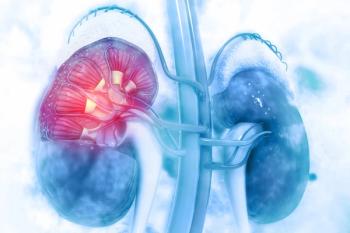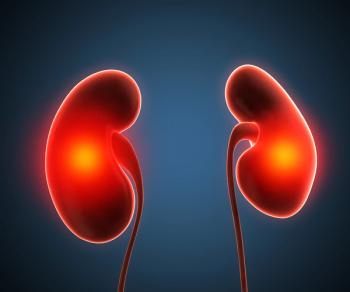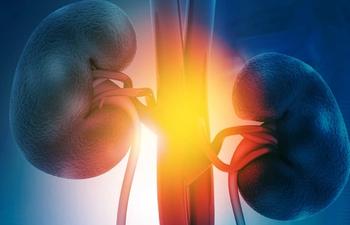
Oncology NEWS International
- Oncology NEWS International Vol 15 No 8
- Volume 15
- Issue 8
Triple Targeted Therapy Is Tested in Pts With Solid Tumors
A phase I trial is testing triple therapy targeted at both the epidermal growth factor receptor (EGFR) pathway and the vascular endothelial growth factor (VEGF) pathway in patients with solid malignancies.
ATLANTAA phase I trial is testing triple therapy targeted at both the epidermal growth factor receptor (EGFR) pathway and the vascular endothelial growth factor (VEGF) pathway in patients with solid malignancies, researchers reported at the 2006 Annual Meeting of the American Society of Clinical Oncology (abstract 3005). "EGFR is overexpressed in many malignancies, including 60% to 80% of renal cell cancers," said Glenn G. Preston, MD, of Brooke Army Medical Center, San Antonio. "Moreover, EGFR stimulation results in VEGF expression and angiogenesis."
The researchers tested the combination of the EGFR tyrosine kinase inhibitor erlotinib (Tarceva), the anti-EGFR antibody cetuximab (Erbitux), and the anti-VEGF antibody bevacizumab (Avastin). The rationale, he said, was based on cases of durable stable disease among patients with renal cell cancer treated with erlotinib, the divergent antitumor profiles of cetuximab and erlotinib, and preclinical data showing synergy with the combination of different agents targeting the EGFR pathway. Study patients had advanced solid cancers that had a high likelihood of EGFR expression and were refractory to standard therapy. Part A evaluated the MTD of daily erlotinib when added to a standard fixed weekly dose of cetuximab. Part B evaluated the MTD of bevacizumab, given every 2 weeks, when added to cetuximab/erlotinib. Dose-limiting toxicities (DLTs) were defined as any grade 3-4 nonhematologic toxicity, except for grade 3 hypertension controlled by medical therapy and diarrhea unless it recurred despite optimal treatment.
In part A, eight patients were treated at the first dose level (erlotinib 100 mg/d orally and cetuximab given as a loading dose of 400 mg/m2 and a weekly dose of 250 mg/m2). Because DLTs occurred, the 11 patients at the second dose level were treated with erlotinib at a lower dose of 50 mg/d. "This level was better tolerated," he said. "We then used 50 mg of erlotinib as our MTD." The cetuximab dose remained the same. In part B, bevacizumab was added to cetuximab/erlotinib at 5 mg/kg every 2 weeks for the first dose level in eight patients and at 10 mg/kg every 2 weeks for the second dose level in two patients. "The MTD of bevacizumab when added to the cetuximab/erlotinib doublet has not been reached," Dr. Preston said, but at least the 5 mg/kg every 2 weeks appears safe.
"Rash, diarrhea, and hypomagnesemia were common, as were hypertension and proteinuria, observed when bevacizumab was added," he said. All of the DLTs occurring during the first course of therapy were grade 3 rashes.
One patient with renal cell cancer had a partial response at the first dose level of part A, he said. Four patients (three with renal cell cancer, one with head and neck cancer), all in part A, had stable disease for at least 6 months; three of them also were treated at the first dose level.
Articles in this issue
over 19 years ago
Younger Age at Brain Tumor Diagnosis Portends Poor Emotional Outcomeover 19 years ago
FDA Approves Three-Drug Combination Tablet for HIV-1over 19 years ago
Side Effects Persist 16 Years After Prostate Ca Brachytherapyover 19 years ago
No Significant QOL Differences for Raloxifene and Tamoxifenover 19 years ago
Amrubicin Appears Promising in Small-Cell Lung Cancerover 19 years ago
R-MP Active in Older Pts With Newly Diagnosed Myelomaover 19 years ago
Sunitinib and Sorafenib Active in Phase II Advanced NSCLC Trialsover 19 years ago
Takeda Signs Agreement With Galaxy Biotech for HuL2G7over 19 years ago
Experimental Regimens Fail to Boost Pancreatic SurvivalNewsletter
Stay up to date on recent advances in the multidisciplinary approach to cancer.


















































































